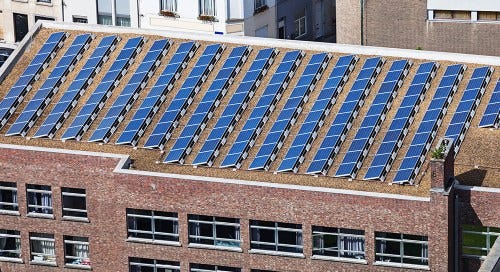Ten Climate Tech Breakthroughs To Watch For
Getting a couple of these soon would be game-changing.
OK, we’re eight months into 2023, and I came up with this list last December. No breakthroughs have happened yet, but they’re getting closer every day.
Here’s the first three, plus a link to the rest on Davemargulius.com:
One: Gigawatt-scale virtual power plants.
Virtual power plants (VPPs) are crowdsourced networks of distributed resources like solar panels and batteries that can act together to provide power to the grid as needed. They can ramp up or down quickly, choreographed by software. VPPs operate today at a small scale (hundreds of megawatts), with early-adopter homes and businesses participating. But as distributed solar and battery installations climb, the potential of VPPs is much bigger – gigawatt scale – and could help put fossil fuel plants out of business. What’s needed are breakthroughs in the software and business models for marshaling and orchestrating VPPs, and integrating them into the grid.
Two: More powerful solar panels.
Solar is fast becoming the lowest cost source of power globally. And important improvements continue to happen – from bifacial panels to better tracker mounts. But the biggest factor limiting solar’s expansion is lack of space. Large-scale solar projects continue to get blocked for all kinds of space-related reasons (land use, transmission requirements, politics, etc). And in cities – where 80% of the world’s energy is consumed – rooftop space for solar is simply too limited. A big breakthrough in solar panel efficiency (today’s best are only 22% efficient) would dramatically change this equation, allowing both rooftop and utility-scale solar to produce way more energy from the same amount of space.
Three: Grid-forming inverter networks.
Fossil fuel plants provide the dial tone of today’s electric grid. They ‘form’ the grid (manage its frequency) by making sure supply and demand stay perfectly balanced. Without these fossil plants (gas and coal), today’s public grid would crash. New networks of ‘grid-forming’ inverters could take over this management role however, enabling the grid to run entirely on renewables. The latest rooftop solar micro-inverters can already form a grid and keep your house running even when the public grid’s down. The next step is for these distributed inverters plus utility-scale inverters (e.g. at big solar and battery installations) to be networked so they can collectively provide the same grid management functions fossil plants currently do (base load, frequency regulation, black start etc).
Continue reading on Davemargulius.com for breakthroughs four through ten: Climate Tech Breakthroughs To Watch For In 2023






